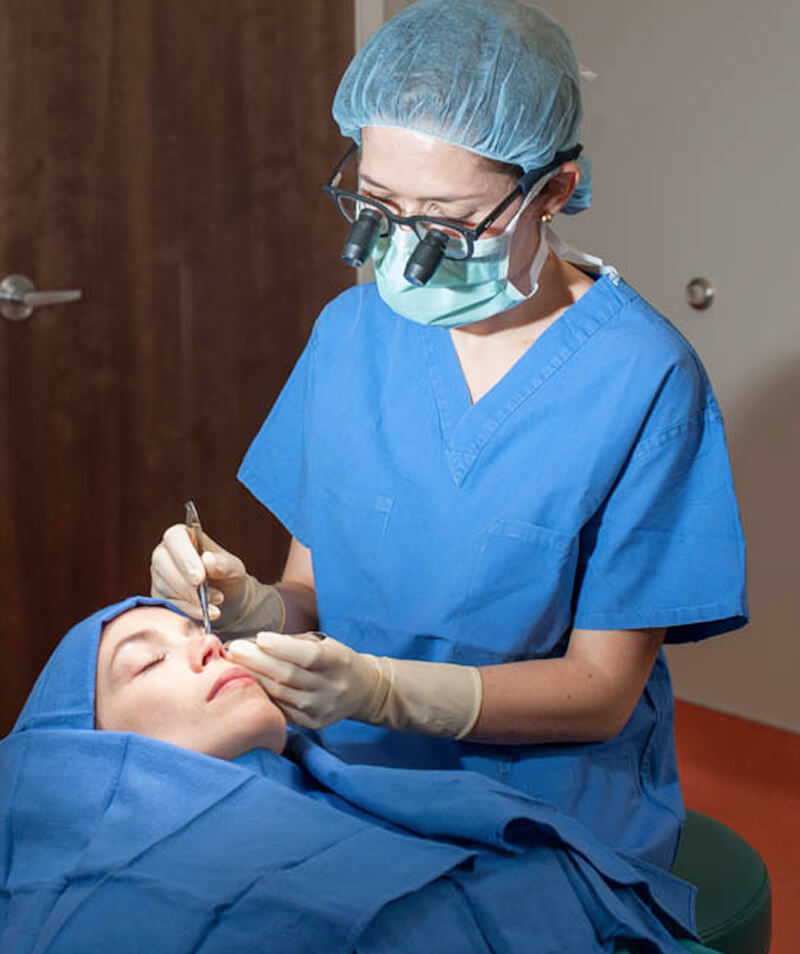Orbital Tumors

Causes and Types of Orbital Tumors
Types of Orbital Tumors
Meningioma
This is a tumor that arises from the structure surrounding the brain known as the meninges. This protective sheath surrounds the brain, optic nerve, and spinal cord. It can grow into the eye socket causing the eye to bulge forward.
Cavernous Hemangioma
Lymphoma

Vascular Lesions
There are several types of blood vessel tumors. A common one in children is capillary hemangioma, which looks bluish if located near the surface. Another cause is a distended vein, called a varix, which is similar to varicose veins found in the leg. A varix can cause an ache around the eye, especially when bending over or lifting something heavy.
Orbital Mucoceles
“My experience at Oasis Eye was great! From the decor to the staff, I knew that my needs would be taken care of in the most professional caring matter. Dr. Schiedler, in my opinion, is an excellent ocular plastic surgeon; and I recommend her services.”
“Dr. Schiedler and staff were all wonderful. Everyone treated me with such respect, dignity and kindness. My post-op and pre-op questions were all answered with clarity. My wait time was minimal and my overall experience was excellent.”
“My experience with Dr. Schiedler and her staff was above and beyond amazing. Everyone was very professional, personal, and concerned about me throughout my whole treatment from start to finish. I would definitely recommend her to anyone needing the services Oasis Eye provides.”
“My experience was great! I needed a biopsy on my lower eyelid. Dr. Schiedler explained the entire process. The process was just how she explained to me and was in no way painful during or after the procedure.”
“Thank you for providing me such excellent care through each stage of my procedure. I am very pleased with the results and ever so appreciative of the attention and care all of you have provided. I have truly enjoyed each of you!”
“The success of my surgery with Dr. Schiedler was far in excess of my initial expectations. As far as I am concerned, Dr. Schiedler worked “miracles” with my sight and appearance. She completely corrected a congenital situation in one eye, and brought my other eye back to the way it looked 30 years earlier.”
“Dr. Schiedler did a lower eye retraction repair with a hard pallet graft which turned out amazing. So happy I got the surgery and it was virtually painless. Dr. Schiedler is very kind and caring and she takes the time to make sure you get the very best care.”
“I have been getting Botox/Xeomin injections for 15 years. I just recently moved here from San Francisco and she by far is the best that I have ever been too. She is extremely knowledgeable in her field. I am getting BBL and Halo Laser next week, I can’t wait! I am very fortunate to have found her.”
Symptoms Related To Possible Orbital Tumors
- Blurry vision
- Double vision
- Pain, aching, swelling
- Inflammation
- Proptosis or bulging of the eye
- Partial or total loss of vision
- A dark patch of vision that slowly gets bigger
- Bleeding into and around the eye
- Sudden episodes of dim or dark vision
Eye Tumor Diagnosis
As with any type of tumor or cancer, imaging studies including CT scans, MRI scans, and ultrasound are used to diagnose an orbital tumor. CT scans are good for evaluating the bone structures, while MRIs are good for looking at soft tissues. Confirmation of the diagnosis is often made with a biopsy. Excision, or removal, of the lesion may be necessary, with the added bonus of being confirmatory and the treatment. If it is a lesion that is not visually threatening nor concerning for malignancy, periodic CT and/or MRI scans may be performed to observe for any changes.
Possible Treatment Methods for Orbital Tumors
Surgery For Orbital Tumors
Non-Surgical Treatment For Orbital Tumors
Some orbital tumors, such as lymphoma, are best treated with less invasive methods like radiation. Depending on location or if other treatments have been unsuccessful, gamma knife radiation may be helpful. This method can be used when surgery would be too risky or when the tumor is tucked at the back of the eye socket. Instead of using a scalpel, gamma knife radiation uses targeted narrow beam gamma rays to destroy the lesion.

